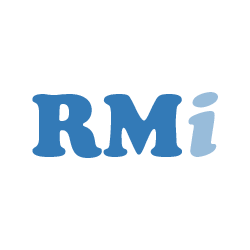December 5, 2016 7:16am
… How long will the upside last as investors are anxious re erratic signals?
I answer one question; in which company should investors put, keep and commit their money!
Who is in today’s headlights – six (6) equities, are they a BUY or a SELL – subscribers know!
I write in every line that investors need to avoid risks as if I were the first to be hurt if I am wrong!
The sector is being driven by a missing theme - until we get some optimism, the path of least resistance is lower.
BUY: ADRO, AGTC, QURE, ONCE and SGMO
SELL: BSTG
Indexes and ETFs: The IWM (+0.68%) is UP; the XLV, IBB and XBI are NOT indicating
Dow futures are +0.49% and NASDAQ futures are +0.55%
U.S. stock index futures pointed to a higher open on Monday as traders continued to digest a drop in unemployment to its lowest level in almost a decade and eyed New York Federal Reserve President, William Dudley's speech.
Europe markets recovered slightly after earlier losses following the announcement from Italian Prime Minister Matteo Renzi that he intended to resign after a defeat in a key referendum.
Asia markets slip, as euro falls on Italian vote with Australia's ASX 200 closing down 0.8%or 43.62 points at 5,400.4. Chinese shares were lower as the long-awaited Shenzhen-Hong Kong Stock Connect launched today, which will give mainland investors access to Hong Kong-listed stocks, and allow international investors to trade Shenzhen-listed stocks.
Data docket: the ISM non-MFG index data released at 10am ET.
The stem, cell, gene and regenerative therapy (SCG&RT) sector closed POSITIVE on Friday, NEGATIVE on Thursday, Wednesday, Tuesday and last Monday.
The SCG&RT sector’s record after the last 5 days (of 43 covered companies):
· Friday closed POSITIVE with 15 decliners, 25 advancers and 3 flat;
· Thursday closed NEGATIVE with 30 decliners, 13 advancers and 0 flat;
· Wednesday closed NEGATIVE with 36 decliners, 7 advancers and 0 flat;
· Tuesday closed NEGATIVE with 22 decliners, 16 advancers and 5 flats;
· Monday closed NEGATIVE with 34 decliners, 7 advancers and 2 flats;
Remembering last night’s newsletter, “Lordy, lordy up above … the sector traded up … having fallen from grace.” Will redemption last through mid-week?
- What is on the agenda for the rest of the month?
The SCG&RT sector is stuck in a market that always breaks down on no news and won’t even stay strong or sustain itself on good news!
- “Our” sector and this market are fixated on the short term and the heck with the near and long-term.
At the moment, I am of the belief that … ANY … SELL trade is appropriate to build the “pot” for next years – BUYS - if there is an upside worth taking!
You’ve made it to the office, turned on the monitor, having just gotten your coffee and it hits you - what could be today’s trades?
Watch list:
· The iShares Nasdaq Biotechnology (IBB) closed Friday up +0.36% and is NOT indicating in Monday’s pre-market;
· The SPDR S&P Biotech ETF (XBI) closed Friday up +1.10% and is NOT indicating in Monday pre-market;
· The Health Care Select Sector SPDR ETF (XLV) closed up +0.23% Friday and is NOT indicating in Monday’s pre-market;
· The iShares Russell 2000 (IWM) closed down -0.07% on Friday and is UP +0.68% in Monday’s pre-market.
Companies in my headlights:
Aduro Biotech (ADRO) closed UP +$0.25 to $10.80 after Thursday’s $10.55 (-0.85) after Wednesday’s $11.40 (-$1.00) following the past sessions, $12.40 <Tuesday>, $12.60 <Monday>, Last Friday’s $13.95 and the previous Wednesday’s $13.95 having started November at $1.10. The FDA lifted the partial clinical hold on trials for its LADD (live, attenuated double-deleted) immunotherapy platform. The lifting of the clinical hold will enable the company to resume patient enrollment in all Aduro-sponsored clinical studies, including one for its cancer vaccine CRS-207. ADRO now plans to commence a P2 clinical trial in the first half of 2017 using its LADD-based cancer therapy CRS-207 in combination with an anti-PD-1 compound to treat mesothelioma. Mesothelioma is a cancer of the tissue that lines the lungs. Purgatory only lasts so long to re-start the trial – Maintaining BUY;
Applied Genetic Technologies (AGTC) closed UP +$0.25 to $8.95 following Thursday’s $8.70 (-$0.50) after Wednesday’s $9.20 (-$0.30) following Tuesday’s $9.50, Monday’s $9.20, last Friday’s $9.90 and the previous Wednesday’s $9.85. Last week’s range of $9.60 to $10.055 compared to the previous week’s $7.05 to $9.85. Up, down, up, down – there is still $9.23 of cash in the per share pricing, solid revenue, a quarterly net income and a solid partner – Biogen (BIIB), what more does an investor need – Maintaining BUY;
Biostage (BSTG) closed DOWN -$0.18 to $0.90 following $1.08 (+$0.28) after Wednesday’s $0.80 (+$0.01). The news that the Esophageal Implant was granted Orphan Drug Designation by the U.S. FDA drove the recent appreciation. Helpful in the short-term but, the financing “Sword of Damocles” still hangs over its head with the NASDAQ listing issue put off for the usual 180 days – a tough slog for shareholders as tax selling season. “A Bridge Too Far” or is this pricing too unsustainable for the pre-clinical status of the company; so, what’s next, more day trading take-downs (?) – Maintaining SELL;
uniQure (QURE) closed DOWN -$0.31 to $5.68. QURE’s first clinical data from its second dose cohort of AMT-060 is an ongoing PI/2 trial in patients with Severe Hemophilia B. New data presented from the second-dose cohort show a dose response with substantial improvement in disease state in all five patients, including the discontinuation of precautionary Factor IX (FIX) infusions in all four patients that previously required chronic replacement therapy. To date, only one spontaneous bleed was reported after discontinuation of prophylactic FIX replacement therapy. Their second-dose cohort demonstrates dose response with all patients free of Prophylactic FIX Replacement therapy and only one spontaneous bleed reported. Its low-dose cohort shows sustained levels of FIX Activity up to one year, with marked reduction of bleeding over time and a complete cessation of spontaneous bleedings in last 14 weeks of observation. There was no activation of T-Cell Responses or loss of FIX activity in any patients – BUY;
Sangamo (SGMO) closed UP +$0.05 to $3.10. November hasn’t been a good month for SGMO, ranging from $3.65 (11/1), hitting a high at $4.55 (11/14); last week was particularly “spent’ as the share price bottomed at $3.05 (12/1) having started the week at $3.25. Biogen (BIIB) is boosting its blood disorder drug pipeline after SGMO transitioned two of its hemoglobinopathy programs to Bioverativ (a BIIB spin-off) which includes drug development programs for sickle cell disease and beta-thalassemia disorder. In 2014, BIIB and SGMO entered a global licensing agreement to develop genome-editing drugs to treat two major blood disorders: sickle cell disease and beta-thalassemia. Impressive hedge and institutional names are staying with SGMO, which I believe is due for a “lift”. Some “push” news is long overdue - Oversold – BUY;
Spark Therapeutics (ONCE) closed UP + UP +$0.27 to $50.01 after Thursday’s $49.74 (-$5.27) after Wednesday’s $55.01 (-$1.62) following Tuesday’s $56.63(+$1.78) after last Monday’s -$54.85 ($1.69). ONCE and Pfizer (PFE) present updated preliminary data from Hemophilia B P1/2 Trial suggesting consistent and sustained levels of Factor IX activity at Annual ASH Meeting. The first participant to reach one year in the study, who has been followed for 52 weeks post-infusion of SPK-9001, has reduced to zero his number of intravenous factor IX infusions without having any bleeds. In the year before administration of SPK-9001, he infused factor IX concentrates prophylactically a total of 98 times and still experienced four traumatic bleeds. As of Nov. 30, 2016, his steady-state factor IX activity level was 33% of normal. Two of the nine participants experienced asymptomatic, transient elevation in liver enzymes associated with an immune response to the Spark100 vector capsid during the first four to eight weeks following administration. In one participant, this response was accompanied by a decline in factor IX activity level from 32 to 12%, as of Nov. 30, 2016. In the other participant, to whom steroids were administered more promptly, this response was accompanied by a decline from a peak factor IX activity level of 71% to 68%, as of 11/30/16. Both participants were put on a tapering course of corticosteroids, and, to date, neither participant has experienced any bleeds nor has required infusion of replacement factor IX concentrates – Maintaining BUY;
Whether information or intelligence is good, bad or somewhere in between; I put into context what is relevant and useful for investors.
Henry McCusker, the editor and publisher of RegMed Investors does not hold or have positions in securities referred to in this publication.
Henry’s comments are for informational purposes only and are not a substitute for personalized advice. Consult your advisor about what is best for you.




